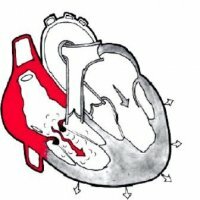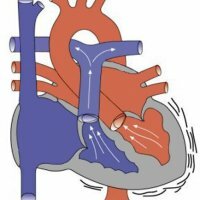Cardiology - Brugada syndrome

- ischemic heart disease,
- myocardial infarction.
But lately worrying sudden death in the absence of clear signs of myocardial disease or coronary vessels, and the saddest thing is that it often happens at a young age.
To date, there is a huge amount of information about the causes and possible ways to combat the diseases of people who are at risk of sudden death. It has been revealed that a large number of diseases have been identified already at the genetic level, which is therefore a great danger, since not only the sick but also their children and relatives are affected.
At present, such diseases are rarely detected by routine clinical practice. Patients with such a disease most often die at home, and not in special hospitals, and doctors do not have anything, as soon as there is death.
However, it is often impossible to establish the exact cause, and therefore doctors put an approximate diagnosis: acute cardiovascular failure. At autopsy, it is impossible to detect damage to the heart muscles or coronary vessels. For children, no matter how strange it may seem, often posthumously put this diagnosis as acute respiratory viral infection, thus attempts to explain the sudden death of minimal manifestations of the infection.
All of the above is the basis for the assertion that clinics do not yet have sufficient experience in monitoring and identifying such patients. Often happens so that the attention of cardiologists is attracted only by the primary signs of the disease, namely:
- syncope,
- palpitations.
But it often happens that the first and last sign of the disease is a sudden death.
development of modern clinical medicine helped identify several signs and syndromes that are closely associated with a high risk of sudden death at a relatively young age:
- syndrome, sudden infant death,
- syndrome, sudden unexplained death,
- syndrome prolongation of the interval QT,
- arrhythmogenic right ventricular dysplasia and other,
- Brugada syndrome, etc.
The most mysterious disease in the aforementioned series is Brugada syndrome. Throughout the world, hundreds of works on this disease have been published, and medical questions are regularly heard on this topic. But in the domestic literature there are only isolated cases where Brugada syndrome is described, which does not give a complete picture of the disease. Most cardiologists agree that exactly Brugada syndrome in 50% of cases is the cause of sudden deaths at a young age.
Brugada syndrome was discovered in 1992 by the brothers P. Brugada and Brugada J.( Spanish cardiologists), first described clinically electrocardiographic syndrome, combining the most frequent family history of syncope and sudden death that is a consequence of polymorphic ventricular tachycardia. They also described the registration of a specific electrocardiographic pattern. They also determined the age when this disease can manifest - 30-40 years. But strange as it may sound, this disease was first diagnosed in a three-year-old girl. It happened frequent fainting spells, which caused sudden death, despite the fact that it carried out an active antiarrhythmic therapy, and had a pacemaker.
Cardiology - Brugada syndrome, for this disease is characterized by the frequent occurrence of syncope with bouts of ventricular tachycardia, entailing a sudden death cases, most often during sleep, as well as the absence of signs that express organic myocardial damage, which should be observed during the subsequent autopsy.
Disease Brugada is a syndrome that is characterized by the following clinical-electrocardiographic forms:
- complete form,
- clinical variants in the form of a typical electrocardiographic pattern for asymptomatic patients, without established family history of sudden death and( or) Brugada syndrome;
- is a typical electrocardiographic picture for asymptomatic patients who have family members with Brugada syndrome in full form,
- typical electrocardiographic pattern that occurs after pharmacological tests in asymptomatic subjects have been conducted with family members of the Brugada syndrome in full form;
- is a typical electrocardiographic pattern that occurs after pharmacological tests in patients with established recurrent syncope and / or idiopathic atrial fibrillation;
Cardiology also distinguishes electrocardiographic variants:
- with a typical electrocardiographic pattern in which the blockade of the right bundle of the bundle is explicit,
- with PR extension and ST segment elevation;
- is a typical electrocardiographic pattern with ST segment elevation, but not accompanied by an extension of the PR-interval, as well as blockade of the right bundle of the bundle;
- incomplete right bundle branch blockade, accompanied by moderate elevation of the ST segment;
- with an isolated PR interval extension.
The degree that determines the prevalence of the Brugada syndrome has not yet been determined with sufficient accuracy by scientists, just as the actual incidence of the disease is not known. But, it is for certain determined that this disease is to varying degrees peculiar to different ethnic groups. Thus, for example, symptoms similar to Brugada syndrome are described in the syndrome of sudden death, recorded mainly among natives of South-East Asia. In Europe, this disease is inherent most of all to the Caucasian type of people, and in African-Americans it is not fixed at all.



